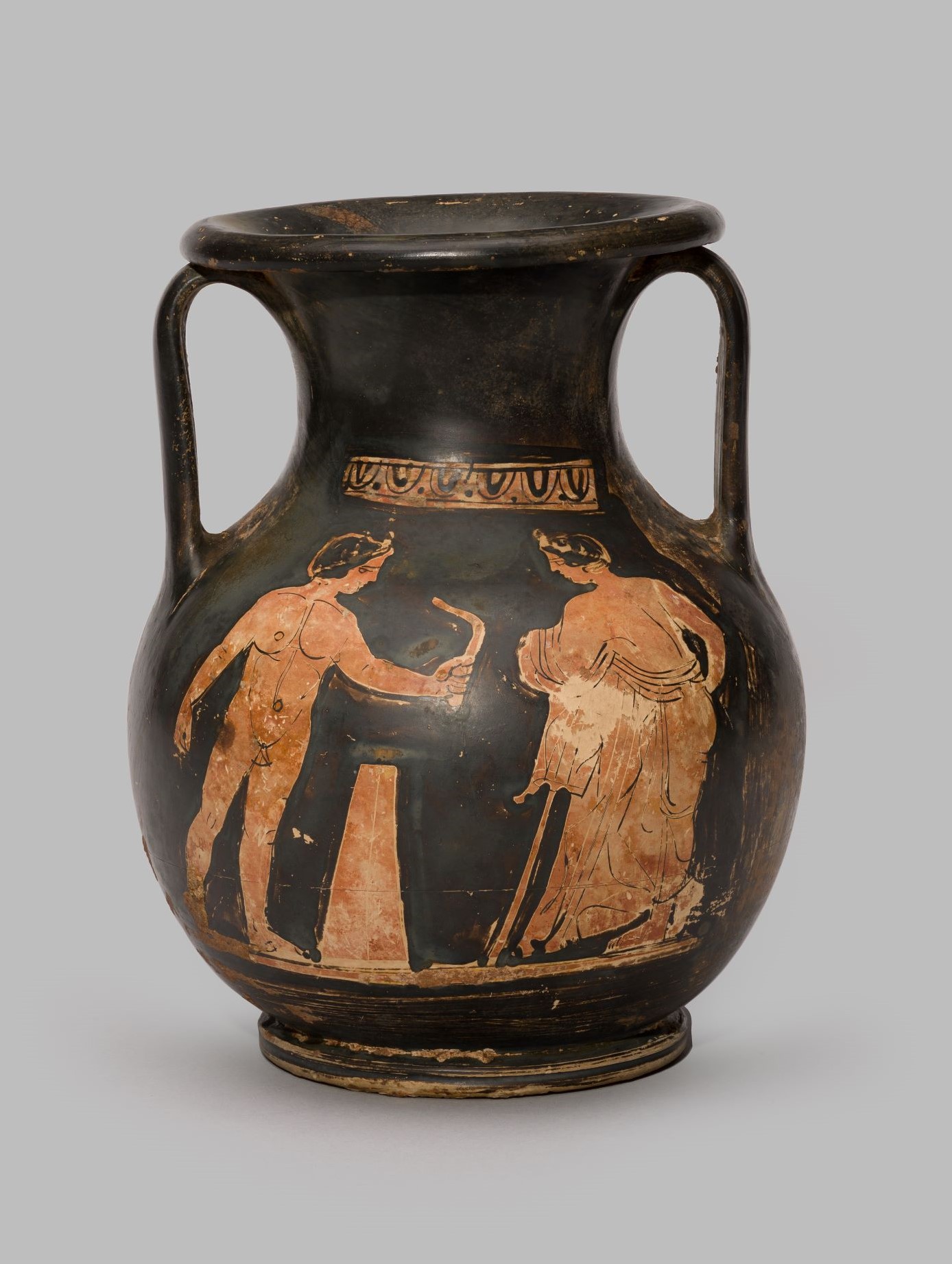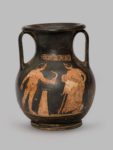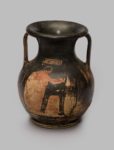
Pelike [Gr50]
Corinthian Red-Figure, by the Pelikai Painter, 420-390 BC
Painted terracotta (h. 18.5 cm, d. 14.6 cm)
A naked athlete stands holding a strigil towards another young man, who is wearing a himation and leaning on a staff. Between them a post with a line running down it. On the other side, a draped youth leans forward with his hand over a post.
This pelike (storage jar) is a rare Corinthian imitation of Athenian red-figure pottery. In the 5th century BC, Corinth had only a small ceramic industry and imported large quantities of fine pottery from Athens. Local production of red-figure began around 440-430 BC, and stopped in the early 4th century. The Pelikai Painter is one of only a handful of Corinthian red-figure painters so far identified. Most of their work is of quite poor quality, and Corinthian red-figure has rarely been found elsewhere in Greece. One disadvantage faced by Corinthian painters was the local clay, which fired to a pale buff colour rather than the bright orange-red of Athenian clay. To imitate the appearance of Athenian pottery, Corinthian vases were sometimes coated in an orange slip before decoration began. Alternatively, as in the present example, a red wash was applied to the unpainted areas of the vase.
One of the figures on this vase is an athlete. He is naked and holds a strigil, used to scrape sweat and dirt from the skin after exercise. On each side of the vase is a post, probably a kampter (turning post) used in running races.
Literature: J. Falconer and T. Mannack, Corpus Vasorum Antiquorum: Great Britain, Fascicule 19: Winchester College (Oxford, 2002), pp. 15-16, plate 11.13-14; I. McPhee and A. Trendall, ‘Six Corinthian Red-Figure Vases’, in M.A. Del Chiaro (ed.), Corinthiaca: Studies in Honor of Darrell A. Amyx (Columbia, 1986), p. 161, figs. 1-2; Winchester College Memorial Buildings: Department of Classical Art (Winchester, 1909), p. 25 (no. 104)
Exhibited: Winchester Discovery Centre, July-August 2012
Provenance: Charles Townley (1735-1805); Alfred Eckhard Zimmern (1879-1957), by whom presented to Winchester College before 1909
Location: Treasury, Gallery 3

